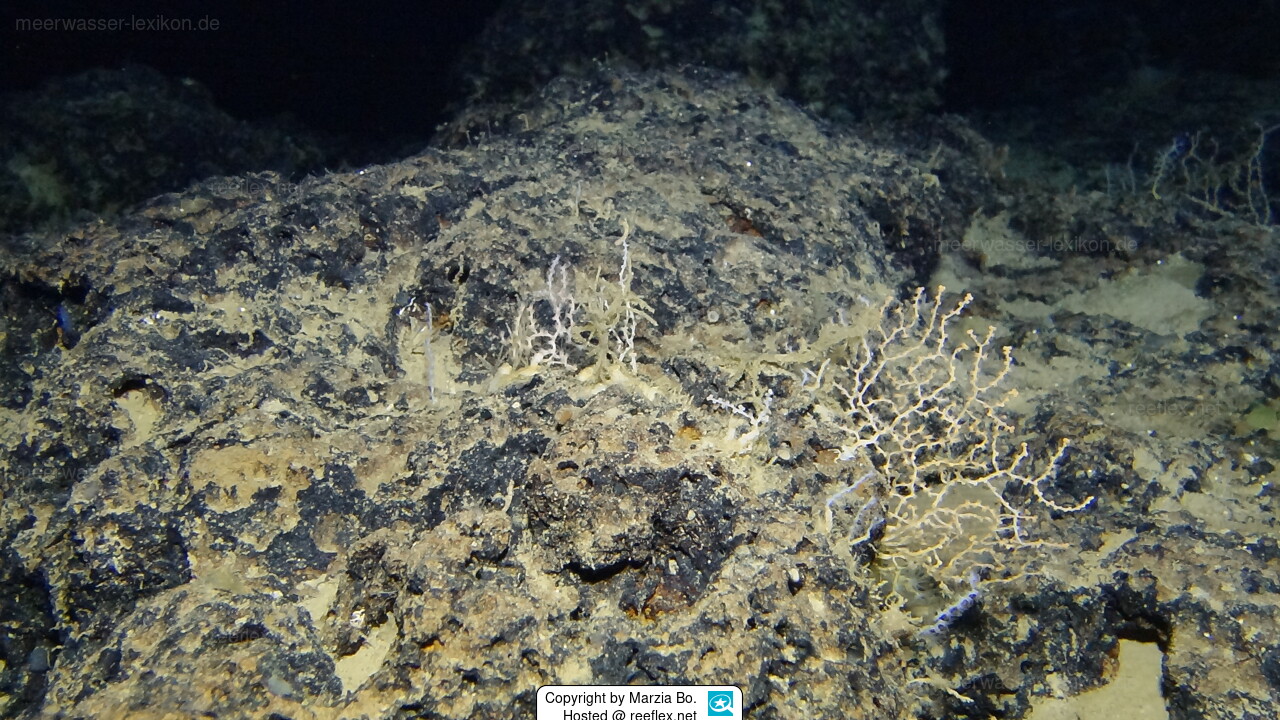Info
Bamboo corals are colonial animals with an internal skeleton consisting of alternating calcareous internodes and sclerite-free proteinaceous nodes.
The nodes can be slightly flexible, while the internodes are rigid. The alternating nodes and internodes give the skeleton the appearance of a bamboo stalk, hence the name of the family.
Bamboo corals are found in all large ocean basins, from a depth of 3 meters to over 4700 meters.
Most bamboo corals adhere to hard rocky substrates with a holdfast; this limits their distribution to habitats such as seamounts, rocky outcrops, canyons, and other areas of the seafloor where hard substrate is exposed.
However, there are some species that have adapted to living in soft sediments, such as Acanella arbuscula (Johnson, 1862) and Lepidisis caryophyllia Verrill, 1883.
The scientific study "Toward a revision of the bamboo corals: Part 3, deconstructing the Family Isididae" now transferred Chelidonisis aurantiaca from the Family Isididae to the Family Chelidonisididae....
The sea fan Chelidonisis aurantiaca was known from only three specimens worldwide until 2008, was collected and identified from a series of unidentified specimens from a depth of 775 meters off the western end of the Bermuda Platform.
The species is distinctive for its calcareous axis interspersed with proteinaceous 'nodules' and star-shaped sclerites that are unique within the family.
Combined with previous observations of the species (more specifically, the subspecies aurantiaca) from the Azores, Ireland, and the Bahamas, this new record provides further evidence for a transatlantic, but possibly rare, deep-water distribution.
The nodes can be slightly flexible, while the internodes are rigid. The alternating nodes and internodes give the skeleton the appearance of a bamboo stalk, hence the name of the family.
Bamboo corals are found in all large ocean basins, from a depth of 3 meters to over 4700 meters.
Most bamboo corals adhere to hard rocky substrates with a holdfast; this limits their distribution to habitats such as seamounts, rocky outcrops, canyons, and other areas of the seafloor where hard substrate is exposed.
However, there are some species that have adapted to living in soft sediments, such as Acanella arbuscula (Johnson, 1862) and Lepidisis caryophyllia Verrill, 1883.
The scientific study "Toward a revision of the bamboo corals: Part 3, deconstructing the Family Isididae" now transferred Chelidonisis aurantiaca from the Family Isididae to the Family Chelidonisididae....
The sea fan Chelidonisis aurantiaca was known from only three specimens worldwide until 2008, was collected and identified from a series of unidentified specimens from a depth of 775 meters off the western end of the Bermuda Platform.
The species is distinctive for its calcareous axis interspersed with proteinaceous 'nodules' and star-shaped sclerites that are unique within the family.
Combined with previous observations of the species (more specifically, the subspecies aurantiaca) from the Azores, Ireland, and the Bahamas, this new record provides further evidence for a transatlantic, but possibly rare, deep-water distribution.







 Dr. Marzia Bo, Italien
Dr. Marzia Bo, Italien

